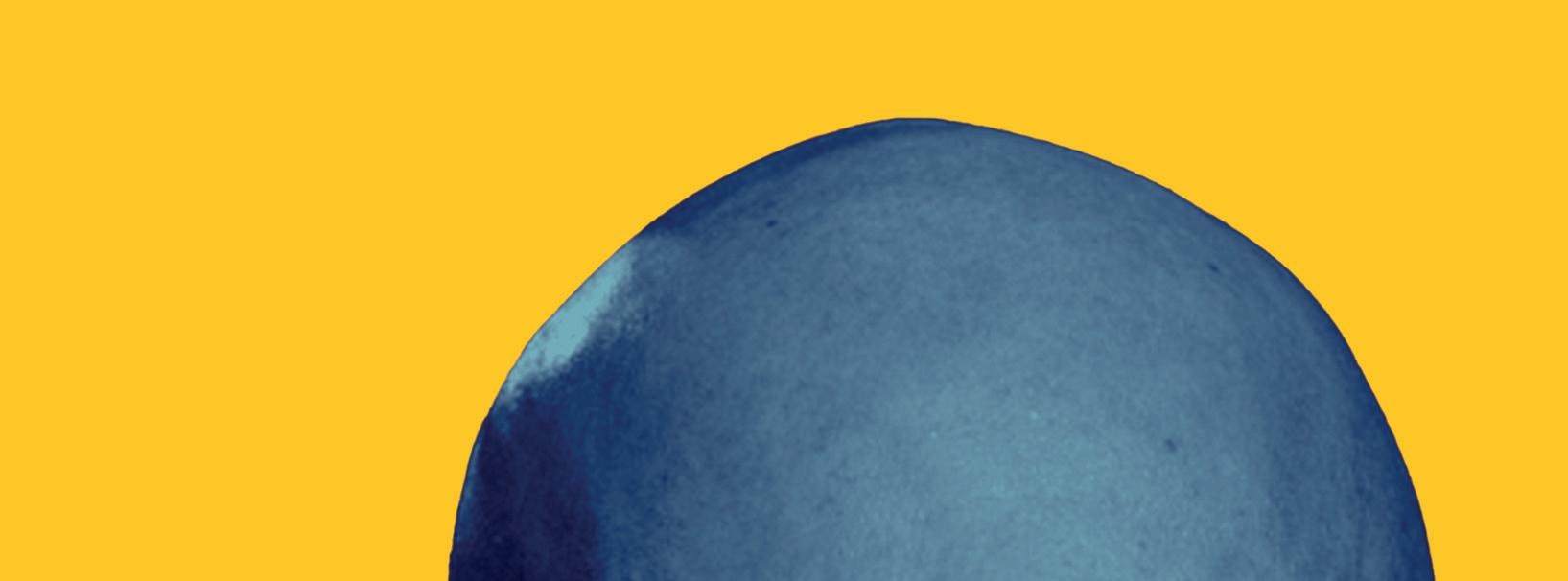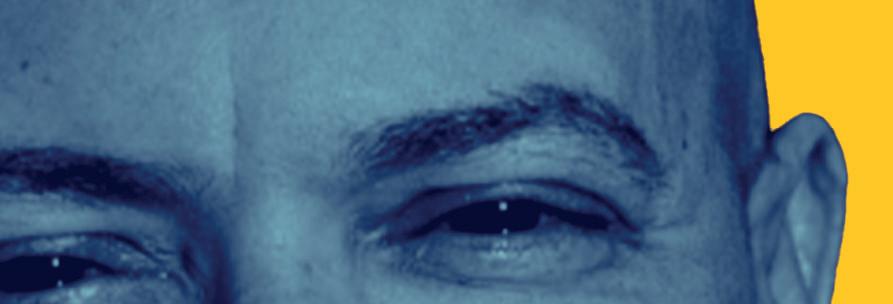
8 minute read
Tadzio Bervoets

© Kai Latouche
Advertisement


Caribbean Climate Change Refugees
Tadzio Bervoets Marine biology & nature conservation expert
In the late summer of 2017, hurricane Irma struck the Caribbean and left a trail of destruction. Tadzio Bervoets describes the course of events on St. Maarten, a small island part of the Dutch Kingdom, and comes to a grim conclusion: both local and crosscontinental infrastructures were not designed to deal with the consequences of climate change.
I am standing in line – or rather, in a disorganised congregation of desperate souls – in the parking lot of St. Maarten’s Princess Juliana International Airport, once the second busiest airport in the Caribbean, now a shell of sheetrock, concrete, metal and glass. The main terminal building is completely gutted. My partner is some feet away, seeking shelter from the searing mid-day sun in the shadow of a delivery van flipped onto its side, all its windows blown out and its bonnet lying fifty meters across the street.
On the van’s bent fender a parrot is inexplicably perched, ogling the approximately one-thousand people filling the parking lot with their desperate chaos – trying, like us, to evacuate ourselves or our loved ones out of St. Maarten. It is September 2017, and the island is still reeling from the sustained one-hundred and eighty-five mile per hour winds and subsequent civil unrest brought upon by one of the strongest hurricanes recorded in the Atlantic, a storm with a name that will live on in infamy in the collective psyche of every Caribbean community from Barbados to Cuba: Hurricane Irma.
Dutch Marines are handing out hot bottled water to people gathering in different sections: one section for US citizens, with US Embassy staff running around with clipboards; one section for Dutch citizens evacuating to Curaçao and then onwards to the Netherlands on military transport aircrafts; one section with EU citizens, getting pink and then purple under the blazing Caribbean sun and looking wide eyed at the destruction around them; and us, desperate Caribbean Nationals (Michelle is Jamaican and was visiting me on St. Maarten), trying to find word on whether people will be evacuated to Antigua and then onwards to Jamaica, Trinidad, St. Kitts… Anywhere. We are all Caribbean Climate Change Refugees.
We are all Caribbean Climate Change Refugees.
Ten days before the storm, as holidaymakers were disembarking their flights on jet bridges now twisted like foil paper, a lowpressure system had started to develop off the Cape Verde Islands in the Atlantic. Three days later, as cruise ship passengers meandered on Front Street — our main tourism centre — that low developed into Tropical Storm Irma. By the next day, when the brewing storm hit unusually warm sea surface temperatures not far from the Lesser Antilles, Irma became a Category 3 storm. The day after, Category 5, intensifying more rapidly than any other storm on record. Tomorrow, a week after the storm, cruise ships will be docking here again, not to have their passengers buy jewellery and electronics on Front Street, but to evacuate three thousand people off of the island. Besides, the jewellery and electronics were looted clean even before the storm stopped raging.
Irma struck on a Wednesday morning. The day before, Marine Park Staff helped to secure various boats in the Simpson Bay Lagoon. We tied our patrol boat down and together had what we knew would be our last cold beer for some time. Predictions weren’t looking good. While we hoped that Irma would head north, the various weather models had the storm hitting us directly. We realised we were in for trouble. We secured our houses, bought our last supplies and hunkered down. By four on Wednesday morning Michelle and I, two dogs and a cat were riding the storm out in our guest bedroom, then kitchen, then
guest bedroom again, the pressure popping our ears and the fourstory concrete building shaking as if in an earthquake.
The storm hummed and sucked like a living, breathing thing. A thing upset at the very presence of humanity. At one point, our ceiling flexed as if being pushed and pulled from above. At six, the eye of the storm was over us and we fled to our downstairs neighbours. Our windows blew out and the ceiling caved in. By twelve, the storm was done. As I stepped out of our hiding area and witnessed the destruction, I thanked the Universe – we were lucky to be alive. Ninety percent of all buildings were flat. Not a single leaf was on a tree, and hundredfoot ships lay across the street as if placed there by a giant child playing Battleship. St. Maarten had been decimated.
Unfortunately, this will more and more become the reality of our situation here in the Caribbean. This paradise of fun and merriment, of frozen beverages and beautiful beaches, of music and sunscreen, will increasingly be faced with disasters brought upon us by a warming climate.
As industrialised nations discuss and meet and hold fora and COPs deliberating the consequences of a warming earth, as the former US President withdrew from the Paris Climate Accords (while ironically having a house on French Saint Martin that was completely obliterated by Irma), as the world struggled with our addiction to fossil fuels and their impact on the climate, we are still trying to put the pieces of our lives back together five years after The Storm. We are trying to adjust to the New Normal: to our new status as Caribbean Climate Change Refugees.
Barbuda, where I did fieldwork surveying the health of their coral reefs just a few months before Irma hit, was declared uninhabitable, the Prime Minister of Antigua and Barbuda having ordered mandatory evacuations off of the island. A whole community displaced because of the effects of climate change. Anguilla, one of the wealthiest islands in the Caribbean, was levelled. Necker Island, home to billionaire philanthropist Richard Branson, was completely destroyed. And, as I was helping my neighbours clear access roads to our community, a lady was washing her two children in brackish well-water. Disaster brings equality. In the aftermath of the storm, local governments – especially on St. Maarten – struggled to control law and order. The island descended into lawlessness. First, people looted water and food, and then they emptied out electronic stores, jewellery stores, anything. I saw one guy dragging his barely clad children behind him with three flat screen TV’s on his head. The island didn’t have electricity for months. Rumours of armed gangs pillaging whole neighbourhoods, emptying hotel rooms and robbing at gunpoint spread like wildfire. Whether true or not, the news circulated around the world and our island has been eternally scarred. People waited frantically for a government in disarray to feed and water them. The Dutch Military arrived to restore law and order, placing us under martial law. There were armed marines patrolling streets that, just a week ago, were lined with bars, restaurants and strip-joints.
Disaster brings equality.
While working in the conservation field, we have been continuously preaching sustainable development to Caribbean and European governments. We have been advocating a structured social welfare system, a sustainable economic plan not totally reliant on tourism, and the protection and management of our natural resources. Resources like coral reefs or mangroves, which not only provide goods and services like tourism and fisheries, but which also protect our vulnerable coastlines and critical infrastructure from the damaging effects of hurricane storm surge. Because of the decline of both coral reefs and mangroves and because of Irma’s unabated twenty foot storm surge, I’ve had to do a diving survey of the Simpson Bay Lagoon earlier today. There is a sunken boat every five metres. The water is more diesel than salt. We will be diving again tomorrow to see if there are any bodies to recover.
Long time neglect by most Caribbean governments of their natural areas has reduced the ability of island ecosystems to be resilient enough to recover from disasters; to allow for the nature of these islands to return to its beauty, the reason why tourism is so popular on all of the islands hit by Irma. Our islands have been changed. Forever. We are at the head of the line now. We have said our hurried good-byes, tearful and fearful, wondering when and where we will see each other again as Michelle is hurried away by the Dutch military to her waiting evacuation aircraft. As I stay and watch the tiny plane leave for Antigua, two women are chatting about which school in the Dominican Republic they will now have to send their young daughters to – all schools on the island are too damaged. A few feet away, in the shade of the upturned delivery van where just an hour ago we sought shade, two of the girls are trying to teach the parrot to say a word. As I walk towards my truck I hear it squawk ‘Irma’.
CURIOUS FOR MORE?
In the DCFA programme Climate and the Kingdom Tadzio Bervoets and others seek to answer the question: how can we create a Dutch Kingdom in which (environmental) justice is at the fore?
BOOK: DECOLONIAL ECOLOGY
Facing the storm, this book is an invitation to build a worldship where humans and nonhumans can live together on a bridge of justice and shape a common world.
PODCAST: ISLANDS ON ALERT Islands on Alert brings the realities of climate change to a small island audience from an islander perspective. It highlights the exciting work being done by island communities, as they lead the global charge in addressing the climate emergency.










